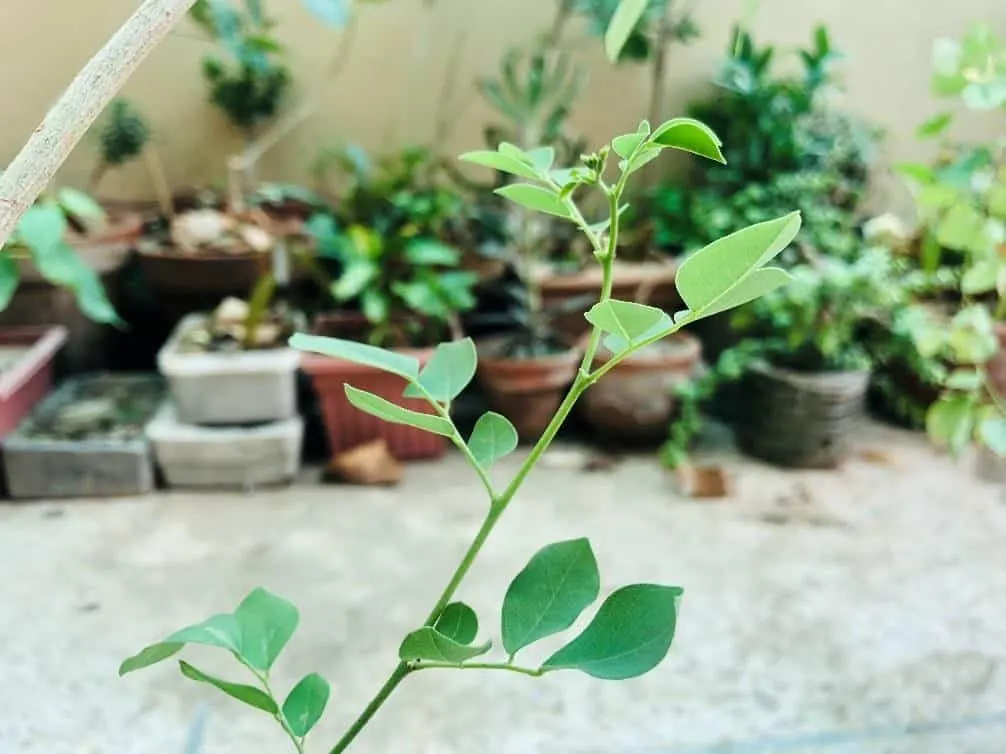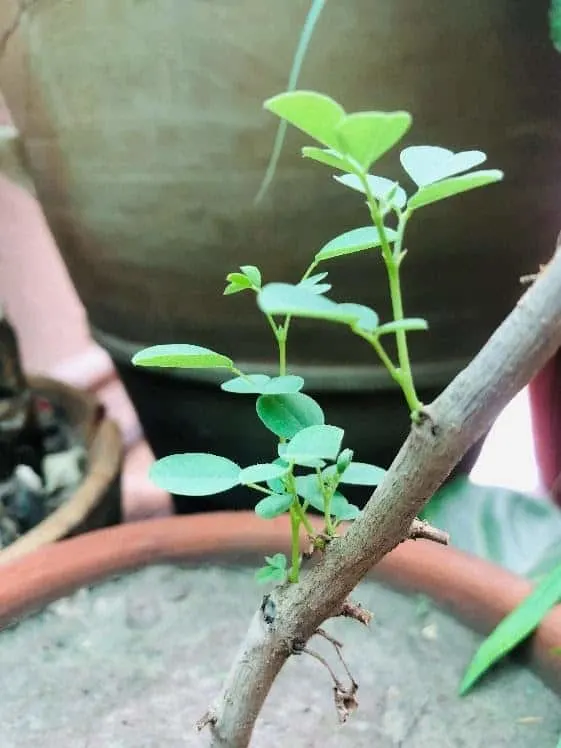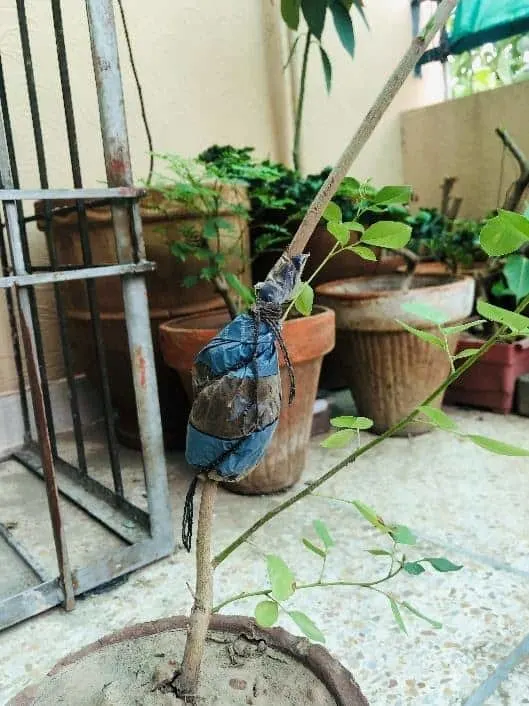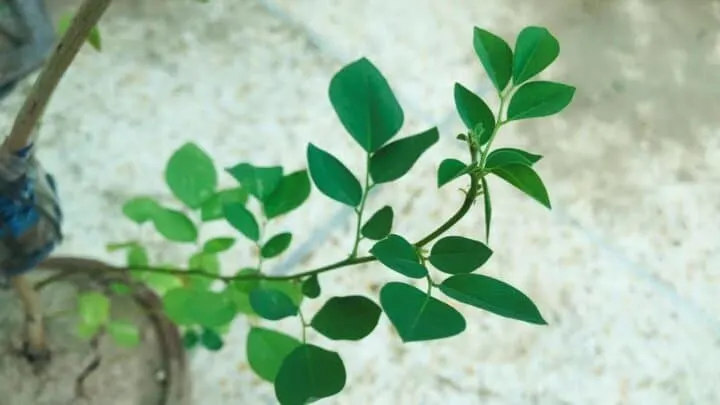The Indian Rosewood tree, or Sheesham as it is known in local languages, is a native of the Indian sub-continent and southern Iran. The tree is known as Dalbergia sissoo in the books of science.
When it blooms, the tree that can grow as high as 30m turns into a fragrant giant with numerous bright yellow flowers on each stem.
This fast-growing deciduous tree is prized for its precious timber. Being cut rampantly throughout its native region for its wood, the magnificent tree risks getting on the endangered species list.
Table of Contents
Indian Rosewood Tree Care
Indian Rosewood tree prefers well-draining soil. Plant it in a sunny spot that gets at least 6 hours of direct sunlight every day. They like evenly moist soil, so water the tree deeply every time the top few inches of soil dry up. Ideal growing temperatures between 65-95°F (18-35°C).
Soil
The Indian Rosewood tree can grow on a wide range of soil types as long as there is adequate drainage. The tree prefers evenly moist soil, and its growth is most vigorous, where ample soil moisture is available at all times. It likes soil on the acidic side and can tolerate soil pH levels 5.6-7.5.
In its native habitat, Indian Rosewood is most commonly found growing in fertile plains. Their population density increases in riverside areas where the water table is relatively high.
A high water table means the tree can absorb as much natural groundwater as it requires to thrive. It is found to grow to 30m high in areas where there is adequate soil moisture compared to a partial 15m in dry areas.
To help your homegrown Indian Rosewood tree thrive, keep it well irrigated if grown in the ground. If growing in containers, use ingredients that will boost soil water retention.
Adding perlite or organic material like leaf mold, grass clippings, straw, or pine bark to the potting mix will help you achieve this goal.
One thing you must consider before planting a Dalbergia Sissoo is that the soil pH must not be too high.
In the case of highly alkaline soils, the tree will have difficulty absorbing the iron it needs from the soil, leading to iron chlorosis, a condition that entails the foliage growing pale yellow.
Light
Dalbergia Sissoo naturally grows in climates that receive plenty of sun all year round. Plant it in a sunny spot that gets at least 6 hours of direct sunlight every day. The number of sunlight hours needed may fall slightly in winters. This tree is not recommended to be grown in low-light areas.
The Indian Rosewood tree loves sunlight from the very time it sprouts as a seedling. Indian Rosewood seedlings require light sun for a few hours a day to gain vigor.
The light-green and thin foliage mean it needs more sunlight and can withstand harsh sun rays.
Indian Rosewood can also be grown in partial shade, but bright indirect sunlight is still vital. Partial shade can be under the light canopy of another tree or under a net that filters a maximum of 50% sunlight.
If you live in a climate where temperatures fall below freezing frequently, getting an Indian Rosewood is not recommended if you cannot provide the tree with greenhouse-like conditions to survive the winters.
Overwintering the tree indoors is not a feasible option as the light requirements for this deciduous tree might never be fulfilled indoors, even with a grow light.
Watering
Your Indian Rosewood tree will thrive when kept in evenly moist soil. These trees require average amounts of water. When grown in the ground, keep them well irrigated to ensure vigorous growth. When in pots, water the plant deeply every time the top few inches of soil dry up.
While this tree asks for constant soil moisture, this does not mean they will tolerate overwatering. Overwatered trees will immediately grow limp, pale, and finally die.
Only water the tree when the top 2-3 inches of the soil have gone completely dry. Water your Indian Rosewood deeply until excess water runs off from the drainage hole.
Deep watering ensures all parts of the rootball become moist, and moisture is available to all roots.
Indian Rosewood is a delicate tree when it comes to water and will not tolerate drought. It is the same reason they are only found growing in alluvial plains where the water table is not too low.

Temperature
Native to tropical and sub-tropical climates, the Indian Rosewood will tolerate high heat but not cold. With ideal growing temperatures between 65-95°F (18-35°C), the tree will not survive temperatures below 40°F (4°C). It is hardy to USDA zones 10-11 only and will need to be overwintered.
Dalbergia Sissoo trees do not survive very cold temperatures for very long. In its native habitat, temperatures rarely go below the 40°F (4°C) mark, even in mid-winter.
The temperature and light requirements for this tree are two critical factors to help you make a decision whether you can take care of this tree well or not.
Though it will not stand low temperatures, if you live anywhere the climate is cooler than USDA zone 10, you will have to bring the tree to a protected environment.
But as you bring it to a warm and comfortable place to spend the winter, you must ensure it gets all the light it needs.
Winter is the dormant season where an Indian Rosewood will shed a lot of its foliage, but it will still need a lot of light to keep alive.
Humidity
Indian Rosewood trees are not finicky about humidity conditions and will do just fine without you having to worry about its humidity requirements. They are naturally used to humidity conditions between 20-80%. Growth becomes rampant in high humidity conditions.
If you are growing a Dalbergia Sissoo tree outside in USDA zones 10-11, you will not have to worry about the humidity requirements for this tree.
You might just want to check on the humidity levels when overwintering this tree indoors.
While it does not need a humidifier or a humidity tray to notch up humidity, you will still want to place it out of drafty locations and away from cold windows.
Fertilizer
Indian Rosewood trees like to be fertilized so they can grow a dense canopy and bloom to the total capacity. You can use NPK fertilizer of ratios 16-4-8 or 15-10-9 to feed this tree fortnightly during the growing season. Acidic fertilizers such as iron chelate or citrus fertilizers are perfect.
Dalbergia sissoo trees naturally grow in fertile alluvial lands. They are moderate feeders and will need nutrition to produce fragrant blooms and seed pods.
The best time to fertilize these trees is early spring when the roots are just starting to grow. There is adequate soil moisture to absorb the fertilizer nutrients and carry them down to the roots.
When grown in pots, water-soluble fertilizer is a better choice for this plant.
If you are growing the Indian Rosewood tree as a Bonsai tree, you can use small fertilizer baskets. The fertilizer basket is an excellent device to feed the trees with very mild doses of fertilizer over many weeks.
Growth
The Indian Rosewood tree is a fast-growing deciduous species with light green, oval-shaped pointed leaflets. It can grow up to a height of 30m (100 ft) when mature. The tree blooms in spring and soon after produces numerous seed pods that mature over the summer. Growth is most vigorous in spring.
Mature specimens of the Dalbergia Sissoo feature light but high crowns that let through filtered sunlight or partial shade. These trees are famous for their relaxing shade.
Their light-colored trunks have a beautiful bark and typically grow in a crooked manner. The trunk movement makes this tree the perfect image of an informal upright Bonsai style.
The lateral roots of this tree often grow quite high in the ground and can often be exposed even if we dig a one-foot-deep hole around the tree.
Although this gives rise to a magnificent trunk base to admire, it can interfere with lawn mowing around the tree.
The blooms are not very visible from afar, and individual flowers can only be identified upon close inspection. The flowers are white in color and give off a sweet fragrance.
When thousands of such flowers bloom in synchronization on a single tree, the tree becomes one fragrant giant!
Potting
Indian Rosewood is a fast grower, and although it grows best when planted in the ground, it will need medium-large size pots to grow well. Clay pots are recommended for their ability to allow air exchange between the soil and the air. Adequate drainage is a must.
Sheesham saplings are most commonly germinated in small plastic grow bags. But the tree grows very tall, very fast, and needs free space to grow its roots and establish itself.
Young trees will grow tall while the trunk is still very thin, making the sapling lean over to one side and give a leggy look.
So when you plant an Indian Rosewood, make sure to add a supporting stake and tie the young tree to it with a soft tie to help it stay upright.
When it comes to potting, it is always better to use terra cotta pots for such plants that need well-drained and well-aerated soil. Furthermore, always make sure the drainage hole is present when potting a tree.
To prevent the drainage hole from getting clogged in the future, add a layer of pebbles to line the bottom of the pot.
Using a tray under your Indian Rosewood tree pot is recommended. As you will have to water the tree deeply, the water that runs off will make a mess at your place. Use a tray to contain excess water and keep things tidy.
Pruning
Indian Rosewood trees are fast growers, so they will need regular pruning if you want to keep them to size when grown in landscapes or in lawns. Young trees regularly grow basal shoots that can steal all the growing energy that belongs to the top foliage. These also need to be pruned off.

Pruning is a major factor in Indian Rosewood tree care as the tree might still need pruning even when it grows into a mature tree.
Young saplings often grow very long stems that dangle everywhere in the wind. Apart from staking it, you might want to trim the top half off to encourage upright bushy growth.
When the tree is 2-3 years old, it grows long pointy shoots out of the canopy that might not look very good in landscapes. Regular pruning every growing season can keep the canopy in shape.
Trimming off the top of the canopy will encourage bushy growth and can increase the shade under the tree.
All in all, the Indian Rosewood responds pretty well to pruning, and you can use it to your advantage to trim the tree to any shape you like.
Indian Rosewood Tree Propagation
The most common method to propagate Indian Rosewood is through seed and naturally growing saplings near mature trees. This species cannot be successfully propagated through cuttings. Young trees quickly sprout from mature seeds when planted in a moist germination mix and a warm place.
Propagation through cuttings is not a viable propagating method for Indian Rosewood trees. Air layering, on the other hand, remains a vastly unexplored avenue and might or might not bear success.
We are, however, conducting an experiment to air layer a young Indian Rosewood tree. The stem in the image was air-layered only two days ago and has not yet given a result.

Air Layering an Indian Rosewood Tree: Does it work?
That leaves us with propagation through seed, the only proven method to propagate Indian Rosewood. Seeds have a higher germination rate when planted while still within their seed pod.
Soaking the seeds in water before planting them boosts germination chances even more.
Conclusion
The Indian Rosewood is a magnificent tree. From its delicate ovate leaves swaying in the wind to the dappled sunlight it lets under its canopy, sitting under the shade of a Sheesham is an experience many never forget.
Give it sunlight and water, protect it from animals, and you will soon have a big Indian Rosewood tree to sit under and enjoy its sweet fragrance.
Frequently Asked Questions about Indian Rosewood Tree
Does close exposure to fire kill Indian Rosewood trees?
The slightest exposure to fire can damage the Indian Rosewood tree significantly and even make it die. Crop burning practices in India and Pakistan result in the death of thousands of Dalbergia Sissoo trees planted around fields.
Is Indian Rosewood deer resistant?
As a matter of fact, herbivores love munching on this tree and will not leave a single leaf untouched. You will have to protect your tree with a tree cage until it grows tall enough.

Daniel has been a plant enthusiast for over 20 years. He owns hundreds of houseplants and prepares for the chili growing seasons yearly with great anticipation. His favorite plants are plant species in the Araceae family, such as Monstera, Philodendron, and Anthurium. He also loves gardening and is growing hot peppers, tomatoes, and many more vegetables.


